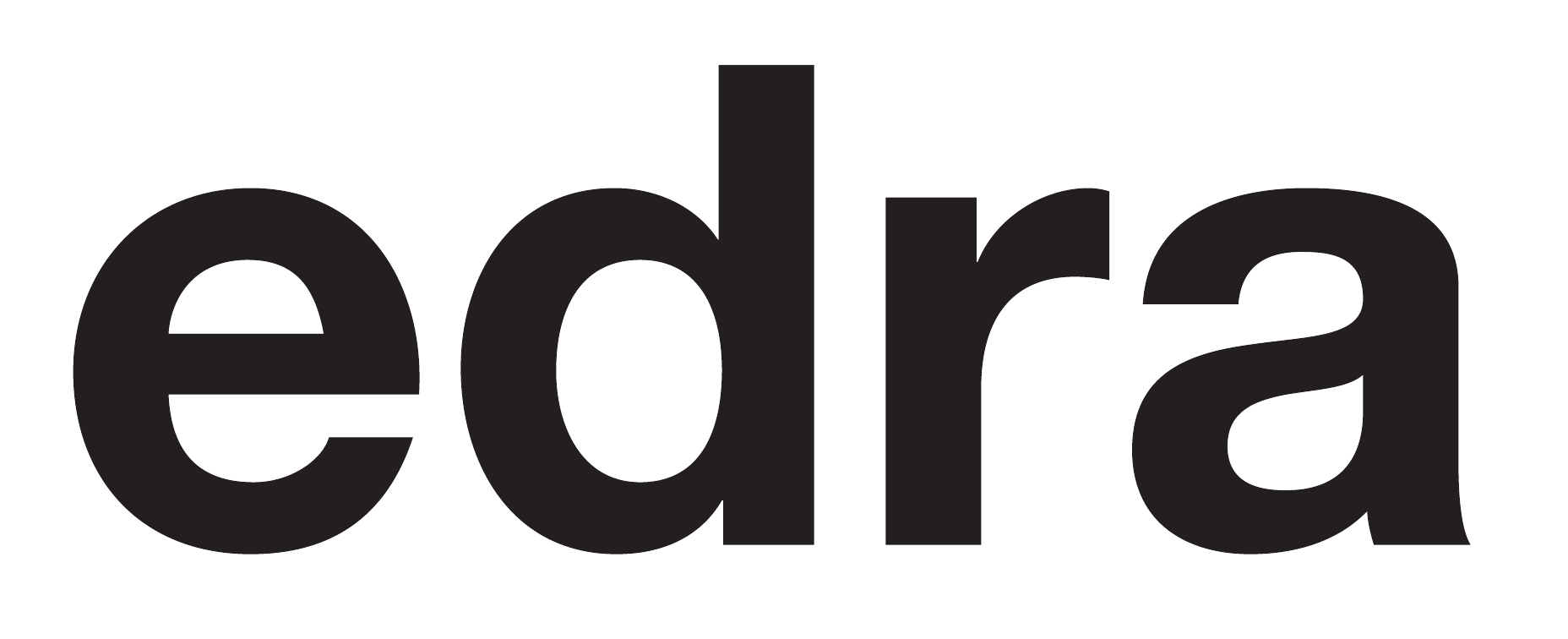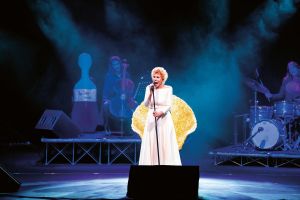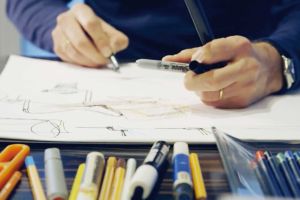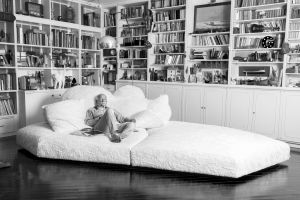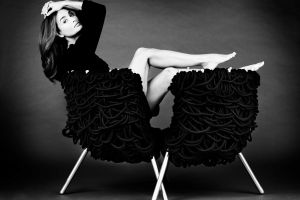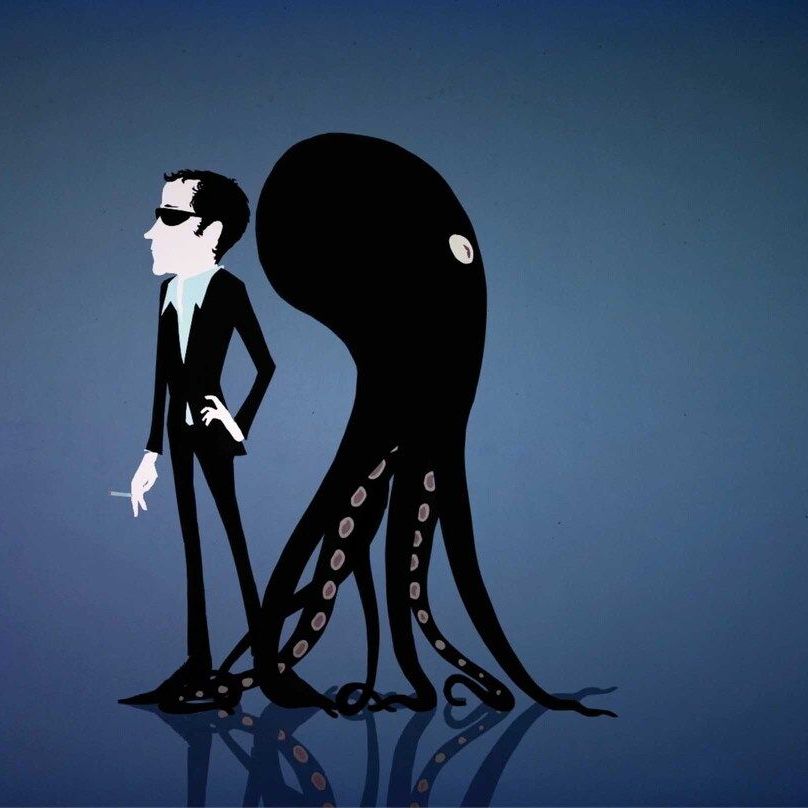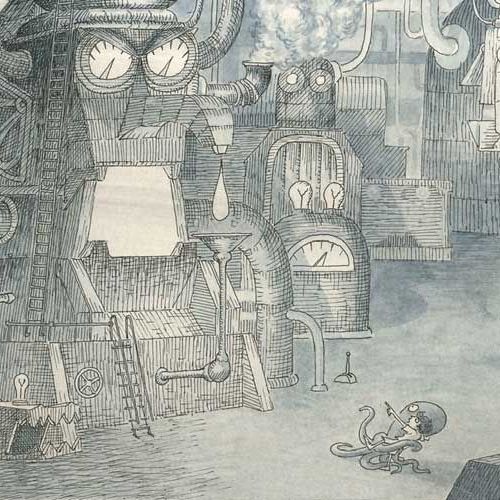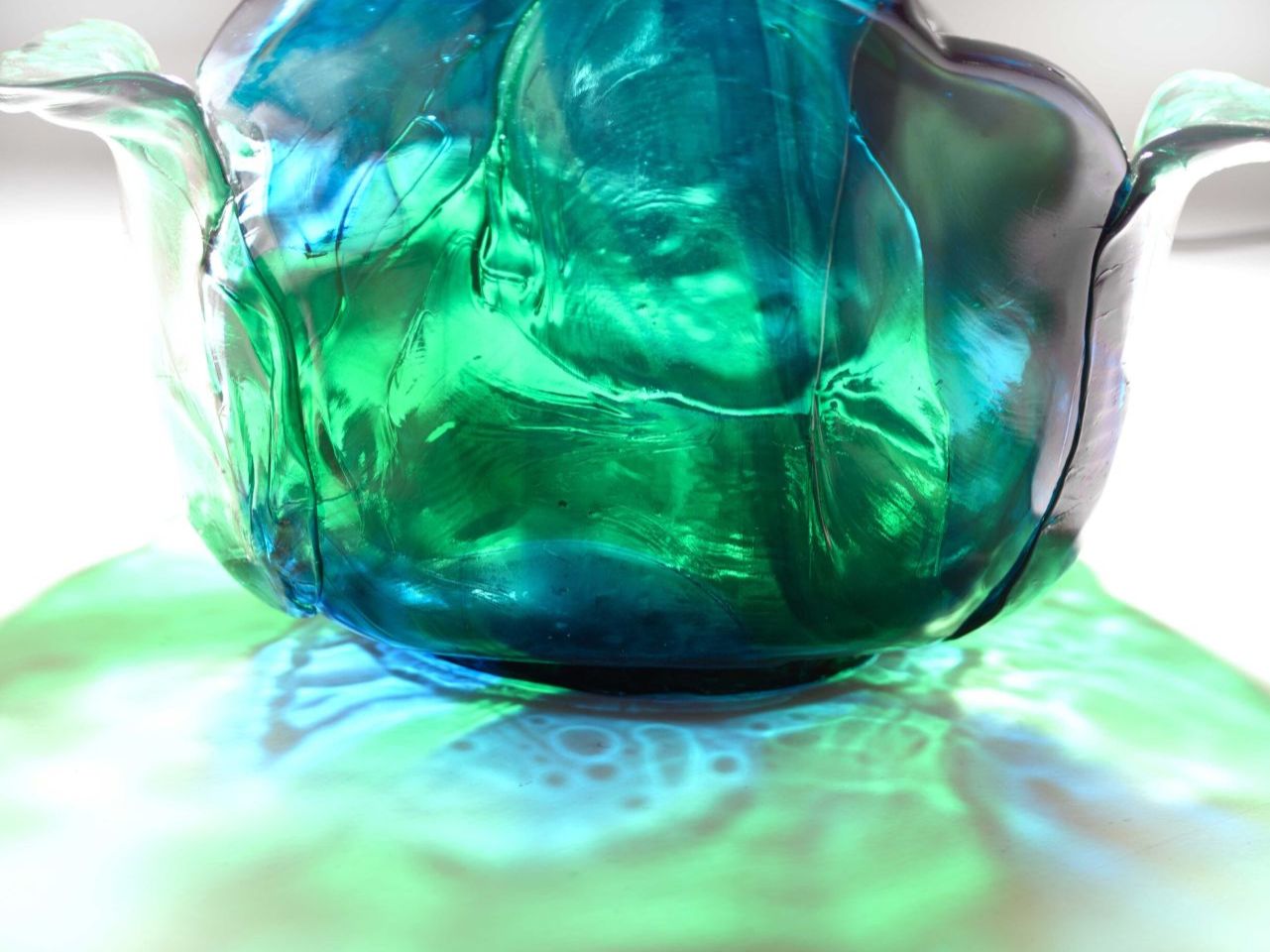
Ella. Detail of Jacopo Foggini’s chair published in the Edra Shades volume.
October 2023
Jacopo Foggini
The expression of gesture
My collaboration with Edra began 14 years ago. It blossomed like an amour and, over the years, it has become a deep and sincere love. For me, the company is a creative oasis where I feel totally free to imagine and experiment without limitations. We share the same values and same philosophy: design that is not bound by fashion. We focus on quality and artistry. Our work together began with the Capriccio table and continued with the chairs Alice, Gina, Gilda B., Ella, Margherita and Ester. These were some of the first projects. Alongside the development of the ongoing collection, our collaboration has been studded with special projects, such as the Nel Blu Dipinta di Blu chairs created for the Musée d’Orsay in 2014. These are all pieces made by hand, created by experimenting with the infinite colour and aesthetic potential of polycarbonate, the material I use for my light installations.
I was born into a family of industrialists whose business was processing plastics for the automotive industry. My mother is a sculptor. I am the synthesis of these two very different worlds. When I was a child, even though I was told to wait in the car, one nightI sneaked into one of these factories. The heat was stifling and it was incredibly noisy. They were changing a mould and, for the first time, I saw a drop of a red substance that looked like glass drip from the mouth of what I thought was a ‘mechanical monster’. This substance was methacrylate, a seed that grew in my mind and became my work. Years later, I was having dinner with Romeo Gigli one evening in the late 1990s. The company was good and the food was too. It was easy to chat, to talk about life and about dreams in his home. I told him that I didn’t want to be an industrialist like my father and I explained my idea to somehow nurture the seed that the ‘mechanical monster’ had entrusted to my care. Romeo Gigli set me a challenge: there was a space in Milan at Alfa Romeo where he had to set up a fashion show for his models, for his clothes. He asked me to use methacrylate to make world globes. I couldn’t back out because he was telling me to do exactly what I wanted to do, but hadn’t found the courage to do yet. So I called Giorgini, the craziest, the nicest, the least engineer-like of the engineers who worked for my father. He also liked to experiment in secret, like me. He helped me to build a machine that could make globes. Romeo Gigli liked them and he also asked me to make some lights for an exhibition at the Fuorisalone. Gigli is perhaps the first Italian designer to create installations using artists and combining different arts: fashion with design, architecture, art and music. He knew then what was happening in the world and he opened up new vistas for me. At the time, there weren’t many of us who imagined that we could do semi-industrial production by hand. So after a few years in the family business, I started to devote myself to something I felt was more my own: the production of unique pieces. I chose that material, which is known in the industrial world and which fascinated me, and I tried to give it a different spirit. I thought that people could appreciate pieces that inhabit the crossroads between art and design, and that could be uniquely tailored to the wishes and needs of the people commissioning them.
So I built a workshop, not an actual factory, but a place of small, non-frightening monsters that discharge drops at a temperature of 280°C.
The machines we use are industrial extruders from an Italian company that my father used to work with. Over the years, with the help of the artisans who work with me, I have learnt how to modify these machines to my needs, so that I can tame the melted thermoplastic resin. Our production lies somewhere between glassmaking, confectionery and something else that I can’t quite define.
The material comes in the form of granules and is partly recycled, which is very important to me. It’s nice to think that products and installations had a previous life as a helmet or maybe a toy. Plastics have been demonised in recent years, but I would actually approach the issue of sustainability differently: it is humankind’s misuse of plastics that makes them so polluting, in themselves they have changed everyone’s lives, most of the time for the better. What I convey through my work is that this material can be used to make beautiful, precious, unique things. I want to give it a new soul and separate it from the perception in industry that it is used only to create uninteresting things. So I transform it into sculptures, armchairs, chairs and lamps.
Recently, I have started to use different materials, like glass for the Egeo tables and alabaster for the Cicladi and Fullmoon occasional tables.
The continuous search for new materials, together with the attention to quality and manual dexterity that distinguish Edra from other Italian excellences, enable us to create objects with a very high artistry component, which makes them unique. I think that today, at a time when the certainties dictated by globalisation and the consumerist frenzy are being challenged, the return to a local, more artisanal dimension is both necessary and inevitable. With Edra we create objects that contain stories and these stories have poetic value and go beyond mere form. Far from the consumerist dynamics of design, we select just a few designs that we develop with love and care to create timeless products. Each one of my creations and each collection tells a new story. It is a continuous reworking of my personal story and the infinite possibilities of my two reference materials: polycarbonate and methacrylate. Working with these two materials allows me to use colour and light not as mere decoration or appendage. Colour and light are the very material that comes out of my machines, and I mould it in an act that is both creative and productive at the same time.
With the A’mare collection I have launched a new language and a new application of polycarbonate to create a family of non-designed pieces which are characterised by a simple line highlighting the material in its purity.
My workshop is full of monsters. Small ones. But they too have noses that emit coloured drops. They give me their seeds and I promise them I will look after those seeds.
 |
Jacopo Foggini While working for the family business he discovered the versatile nature of methacrylate and invented a machine to melt it and then be able to model it with his own hands. After the debut in 1997, with an installation in the space by Romeo Gigli, his sculptures became part of the permanent collections of prestigious institutions around the world. His work was born and remains on the border between art and design and ranges from the creation of monumental installations to the collaboration with Edra. |



